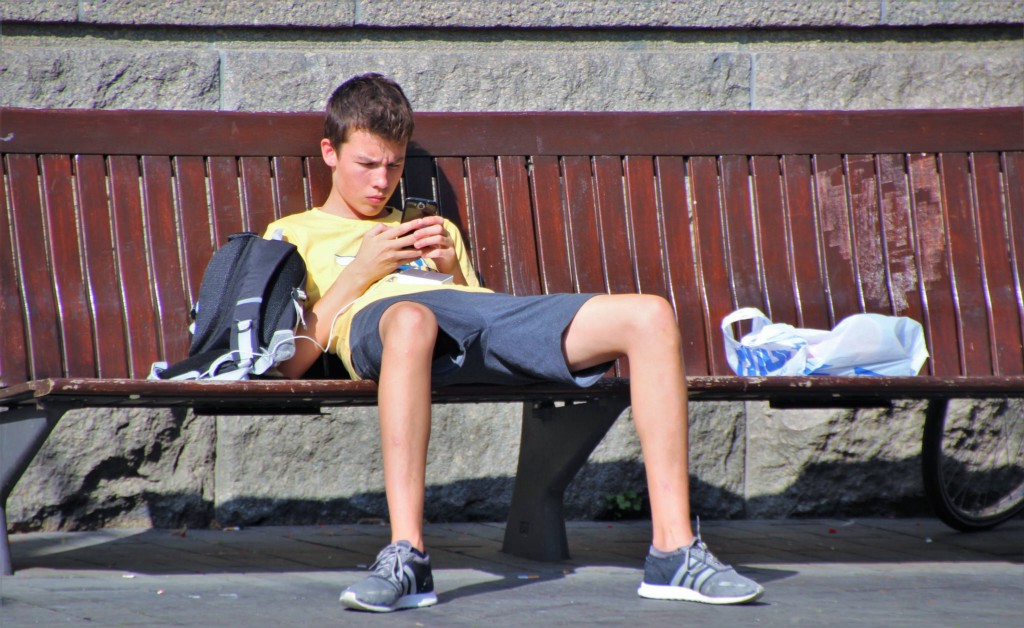Boys Don't Cry
In my other life, I don’t feel pain.

One thing I remember is pitching over at the host stand of the restaurant I worked at in 2014. My ovary had a cyst, I’d learn at the ER, a place that I’d force myself to walk to, cradling my lower abdomen like, well, you know what. I remember the doctor saying that the cyst had most likely ruptured, and that there was nothing to worry about, though I don’t even remember him saying that, so much as I remember the essence of that thought, my mind steeped in a green aura. My worst bout of migraines were coming on soon, and that meant any medical calamity before them was rendered more or less inconsequential. Thinking back to a ruptured ovarian cyst now is like a memory of languishing in the Portofino sun in gingham. A dream.
This year, another friend described an experience to me that sounded symptomatically similar to my cyst. I assured her, to the best of my ability, that there was nothing to worry about. She suspiciously accepted my reassurance. I had been through the terrifying cramping and the fears that you will shatter, the wonder about whether this was what childbirth was like and if it could possibly be worth it, and I had been fine. In fact, I had basically forgotten. I had put aside that pain, tucked gently behind more severe pains, as if filing away cards in a card catalogue. I didn’t remember it until I experienced the phantom of the pain again, not long before my friend explained what she was going through. The shadow of the pain was an admonishment for arrogance. The reminder of the pain was humbling.
I have always been captivated by the ways pain is felt individually and relatively: friends of mine whose entire bodies are covered in ink were admirable. They held the scars from their labors on the surface — art and mistakes and memories they’d spend years defending until they were fed up. These friends, and friends who were visited by pain involuntarily, were a reminder of my low tolerance for pain, of pain’s commitment to making me feel small and stupid. A brag I remember hearing often from teenage girls was, “I have a really high tolerance for pain.” How could anyone know that? How could that be quantified? What if the person who walks over hot coals is less comfortable telegraphing their pain? What if they’ve learned how to properly compartmentalize what they’re experiencing? What if the world has taught them their pain doesn’t count?
This year — different from the year of the ruptured cyst, different from the year spent awake every night with migraines so severe I thought a higher power was punishing me — I felt pain, hard-to-quantify, hard-to-describe, hard-to-communicate pain. Pain brought on by an invisible force, unlike a scraped knee that bleeds or a broken arm that snaps. Internal. Inexplicable.
I saw others around me experiencing pain, too, and because of how difficult it is to really transmit your feelings to another, the world began to feel like an alienating place. The internet was riddled with attempts at destigmatizing certain kinds of buried pain — anxiety, depression, are you an introvert, did you get a bad Myers-Briggs score, are you a Virgo, does your dog not love you — but that somehow only made the isolation even more acute. If everyone is depressed, am I even depressed? If everyone has anxiety, aren’t we all normal? If you aren’t an introvert, you’re an extrovert. If you don’t talk loudly and publicly about your pain, you must not have any pain at all. Empathy is not without limits.
My only real goal for this year — the year before I turn 30, which I guess is basically as nonthreatening these days as saying the year before I turn 16 — was to find a way to understand, massage, and jettison some pain. And through that goal, I found an even deeper well: one of guilt and self-doubt, one where I knew I wasn’t entitled to a pain-free existence. I began to unthinkingly absorb suffering, compounding my own with others’, and wanting to put a soothing balm on it all. I confronted the depth the world has to foster and double pain, and in the dark, I saw my limits. I couldn’t cure anything. I couldn’t help anyone. I couldn’t even help myself. The power of relativity in people’s pain was unfathomable, and I’m sure I will never understand it.
I don’t have to imagine who I was in another life because I escape to that person often, at these moments — and particularly in this year — where nothing feels sacred, no progress possible. He is a teenage boy, running two steps at a time down a staircase, and when he reaches the end, he jumps up to the low-hanging ceiling and taps it with his hand like he’s high-fiving King James. He sweats the fear out in pickup soccer and eats half of an entire pizza because he’s “a growing boy.” He swears but no one cares, he’s kind but doesn’t have to be, and he smells sour in clothing that’s a little too big and a little too worn in. His only insecurity is over a rash of pimples covering his cheekbones. The wealth of pain in the world hasn’t reached him yet, and in my imagination, where he is safe and eternally youthful, it never will.
Dayna Evans is a senior writer at The Cut.
In My Other Life, a collection of essays from writers we love, is The Awl’s goodbye to 2016.
